Standard – 15.00 лв.
- Students (certified by a document) – 6.00 лв;
- Bulgarian citizens over 60 years of age (certified by a document) – 7.00 лв;
- For parents (mother, father with up to 3 children from 7 to 18 years old) – 20.00 лв;
- Tour guide in bulgarian – 30.00 лв;
- Translated tour guide – 40.00 лв;
- Tour guide in another language – 50.00 лв.
Standard - 10.00 лв.
- Students (certified by a document) – 5.00 лв;
- Bulgarian citizens over 60 years of age (certified by a document) – 5.00 лв;
- For parents(mother, father with up to 3 children from 7 to 18 years old) – 15.00 лв;
- Tour guide in bulgarian – 20.00 лв;
- Translated tour guide – 30.00 лв;
- Tour guide in another language – 40.00 лв;
- Funicular railways – two-way – 10.00 лв;
- Funicular railways – one-way – 5.00 лв;
- Funicular railways – people with permanent disabilities – two-way and one-way – 5.00 лв;
- Funicular railways – For a family (mother, father with up to 3 children from 7 to 18 years old) – two-way – 20.00 лв.
- Funicular railways – For a family (mother, father with up to 3 children from 7 to 18 years old) – one-way – 10.00 лв.
Standard - 10.00 лв.
- Students (certified by a document) – 5.00 лв;
- Bulgarian citizens over 60 years of age (certified by a document) – 5.00 лв;
- For parents (mother, father with up to 3 children from 7 to 18 years old) – 15.00 лв;
- Tour guide in bulgarian – 20.00 лв;
- Translated tour guide – 30.00 лв;
- Tour guide in another language – 40.00 лв.
Standard - 10.00 лв.
- Students (certified by a document) – 5.00 лв;
- Bulgarian citizens over 60 years of age (certified by a document) – 6.00 лв;
- For parents (mother, father with up to 3 children from 7 to 18 years old) – 15.00 лв;
- Tour guide in bulgarian – 20.00 лв;
- Translated tour guide – 30.00 лв;
- Tour guide in another language – 40.00 лв.
Standard - 10.00 лв.
- Students (certified by a document) – 5.00 лв;
- Bulgarian citizens over 60 years of age (certified by a document) – 6.00 лв;
- For parents (mother, father with up to 3 children from 7 to 18 years old) – 15.00 лв;
- Tour guide in bulgarian – 20.00 лв;
- Translated tour guide – 30.00 лв;
- Tour guide in another language – 40.00 лв.
Standard - 10.00 лв.
- Students (certified by a document) – 5.00 лв;
- Bulgarian citizens over 60 years of age (certified by a document) – 6.00 лв;
- For parents (mother, father with up to 3 children from 7 to 18 years old) – 15.00 лв;
- Tour guide in bulgarian – 20.00 лв;
- Translated tour guide – 30.00 лв;
- Tour guide in another language – 40.00 лв.
Standard - 10.00 лв.
- Students (certified by a document) – 5.00 лв;
- Bulgarian citizens over 60 years of age (certified by a document) – 6.00 лв;
- For parents (mother, father with up to 3 children from 7 to 18 years old) - 15.00 лв;
- Tour guide in bulgarian – 20.00 лв;
- Translated tour guide – 30.00 лв;
- Tour guide in another language – 40.00 лв.
Standard - 10.00 лв.
- Students (certified by a document) – 5.00 лв;
- Bulgarian citizens over 60 years of age (certified by a document) – 6.00 лв;
- For parents (mother, father with up to 3 children from 7 to 18 years old) – 15.00 лв;
- Tour guide in bulgarian – 20.00 лв;
- Translated tour guide – 30.00 лв;
- Tour guide in another language – 40.00 лв.
Standard - 10.00 лв.
- Students (certified by a document) – 5.00 лв;
- Bulgarian citizens over 60 years of age (certified by a document) – 6.00 лв;
- For parents (mother, father with up to 3 children from 7 to 18 years old) – 15.00 лв;
- Tour guide in bulgarian – 20.00 лв;
- Translated tour guide – 30.00 лв;
- Tour guide in another language – 40.00 лв.
Standard - 15.00 лв.
- Students (certified by a document) – 8.00 лв;
- Bulgarian citizens over 60 years of age (certified by a document) – 8.00 лв;
- For parents (mother, father with up to 3 children from 7 to 18 years old) – 30.00 лв;
- Tour guide in bulgarian – 20.00 лв;
- Translated tour guide – 30.00 лв;
- Tour guide in another language – 40.00 лв;
- Certificate - 10.00 лв.
Standard - 15.00 лв.
- Students (certified by a document) – 6.00 лв;
- Bulgarian citizens over 60 years of age (certified by a document) – 8.00 лв;
- For parents (mother, father with up to 3 children from 7 to 18 years old) – 25.00 лв;
- Tour guide in bulgarian – 30.00 лв;
- Translated tour guide – 40.00 лв;
- Tour guide in another language – 50.00 лв.
Standart - 15.00 лв.
- Students (certified by a document) – 6.00 лв;
- Bulgarian citizens over 60 years of age (certified by a document) – 8.00 лв;
- For parents (mother, father with up to 3 children from 7 to 18 years old) – 25.00 лв;
- Tour guide in bulgarian – 30.00 лв;
- Translated tour guide – 40.00 лв;
- Tour guide in another language – 50.00 лв.
Standard - 10.00 лв.
- Students (certified by a document) – 4.00 лв;
- Bulgarian citizens over 60 years of age (certified by a document) – 6.00 лв;
- For parents (mother, father with up to 3 children from 7 to 18 years old) – 15.00 лв;
- Tour guide in bulgarian – 20.00 лв;
- Translated tour guide – 30.00 лв;
- Tour guide in another language – 40.00 лв.
Standard - 15.00 лв.
- Students (certified by a document) – 6.00 лв;
- Bulgarian citizens over 60 years of age (certified by a document) – 8.00 лв;
- For parents (mother, father with up to 3 children from 7 to 18 years old) – 25.00 лв;
- Tour guide in bulgarian – 30.00 лв;
- Translated tour guide – 40,00 лв.
- Tour guide in another language – 50.00 лв.
Standard - 10.00 лв.
- Students (certified by a document) – 4.00 лв;
- Bulgarian citizens over 60 years of age (certified by a document) – 5.00 лв;
- For parents (mother, father with up to 3 children from 7 to 18 years old) – 10.00 лв;
- Tour guide in bulgarian – 20.00 лв;
- Translated tour guide – 30.00 лв;
- Tour guide in another language – 40.00 лв.
Standard - 10.00 лв.
- Students (certified by a document) – 5.00 лв;
- Bulgarian citizens over 60 years of age (certified by a document) – 6.00 лв;
- For parents (mother, father with up to 3 children from 7 to 18 years old) – 15.00 лв;
- Tour guide in bulgarian – 20.00 лв;
- Translated tour guide – 30.00 лв;
- Tour guide in another language – 40.00 лв.
Standart - 10.00 лв.
- Students (certified by a document) – 4.00 лв.;
- Bulgarian citizens over 60 years of age (certified by a document) – 5.00 лв;
- For a family (mother, father with up to 3 children from 7 to 18 years old) – 15.00 лв;
- Tour guide in bulgarian – 20.00 лв;
- Translated tour guide – 30.00 лв;
- Tour guide in another language – 40.00 лв.
Free visits
- Children up to 7 years old;
- Children from social homes, group visits of pupils and students for educational purposes from the Municipality of Veliko Tarnovo (from 15.09 to 30.06) upon written request from the director of the scholarly institution;
- Persons with permanent disabilities and a social assistant (certified by a document);
- Organized groups of Bulgarian communities abroad, fluent in Bulgarian;
- Every last Thursday of the month;
- Benefactor of RIM - Veliko Tarnovo (against the relevant personal card);
- Official guests of the Municipality of Veliko Tarnovo;
- Employees of museums and galleries (certified by an official card);
- Persons with merits to RIM Veliko Tarnovo (certified by a personal pass).
Preferences and combined tickets
- For organized groups of 10 or more people:
- without a contract with RIM - 10% discount on the cost of the personal ticket;
- with a signed contract with RIM - Veliko Tarnovo, by the "Internal Rules of the Regional Historical Museum - Veliko Tarnovo for concluding contracts for joint activities with tour operators and travel agents" - 40% reduction in the cost of the personal ticket;
- Organized student groups, according to the Regulation for organizing and conducting children's and students' recreation and tourism, initiated by educational institutions, with a total price for visits to 2 sites, visit a third site for free (does not apply to Multi-Media Visitor Center"Tsarevgrad Tarnov");
- Individual two-day visitor package for 10 museum sites (April 1 - October 30) - 40,00 лв.
- Family (parents: mother and father with up to 3 children from 7 to 18 years old): two-day package for 10 museum sites - 50.00 лв.
Individual two-day visitor package for 10 museum sites (April 1 - October 30)
40,00 лв.
The sites from which each visitor can choose the 10 they wish to visit are:
- Tsarevets Architectural and Museum Reserve;
- Trapezitsa Architectural and Museum Reserve;
- Vazrazhdane Museum and Constituent Assembly;
- Archaeological Museum;
- Church "St. Peter and Paul";
- Church "St. 40 Martyrs";
- Prison Museum;
- Sarafka's House;
- Church "St. Arch. Michael and Gabriel", Arbanassi;
- Church "Nativity of Christ", Arbanassi;
- Church "St. George", Arbanassi;
- Konstantsalieva House, Arbanassi;
- Archaeological Reserve Nikopolis ad Istrum, near the village of Nikyup;
- Philippe Totue Museum;
Combined ticket for the Tsarevgrad Tarnov Multi-Media Visitor Center, the Church of St. Peter and Paul and the Church of St. Ivan of Rila
- Standard combined ticket - 20.00 лв
- Students (certified by document) – 6.00 лв
- Bulgarian citizens over 60 years old (certified by document) – 10.00 лв.
- For parents (mother, father with up to 3 children from 7 to 18 years old) - 30.00 лв
- Tour guide in bulgarian – 20.00 лв.
- Translated tour guide – 30.00 лв.
- Tour guide in another language – 40.00 лв.
Specialized services provided by RIM - Veliko Tarnovo
- Author's filming of the DKC – 60.00 лв.;
- Use of museum spaces (per hour) – conferences, concerts, exhibitions, and meetings – 300.00 лв.;
- Rituals:
- Wedding rituals – 1 100.00 лв.
- Baptisms – 600.00 лв.
- Thematic selection and presentation of movable cultural values (MCC) for publishing and advertising publications – 100.00 лв. per MCC;
- Use of the services of the departmental library by persons external to RIM – Veliko Tarnovo:
- Annually – 20.00 лв.;
- One-time – 2.00 лв.;
- Copying services:
- А4 – 0.10 лв./стр. (0.15 лв. double-sided);
- А3 – 0.20 лв./стр. (0.30 лв. double-sided);
- Historical reference, copies of documents, etc. – according to the Tariff;
- Sale of consignment – by contract.
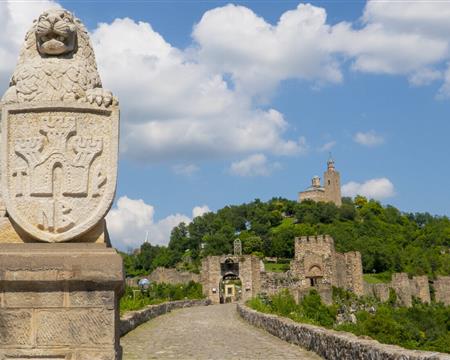
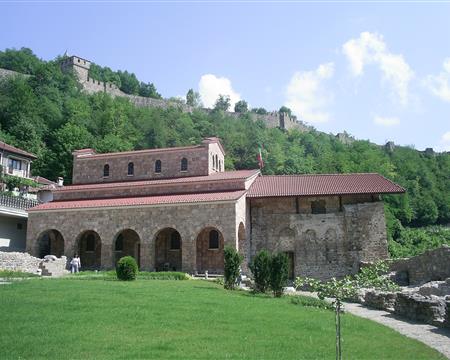
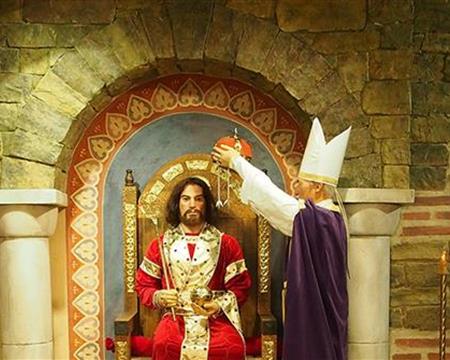
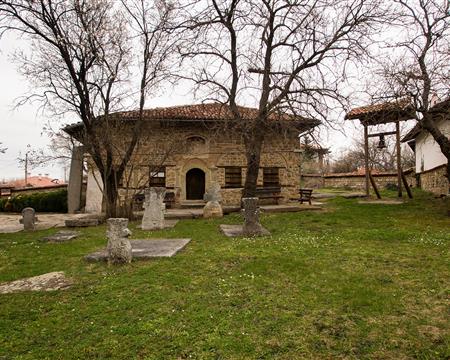
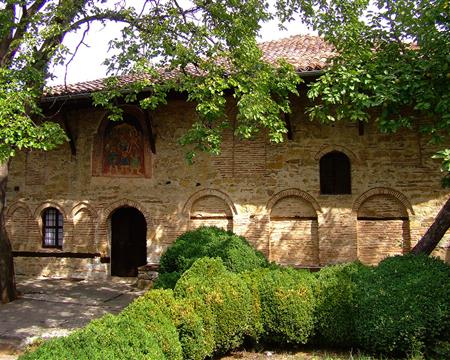
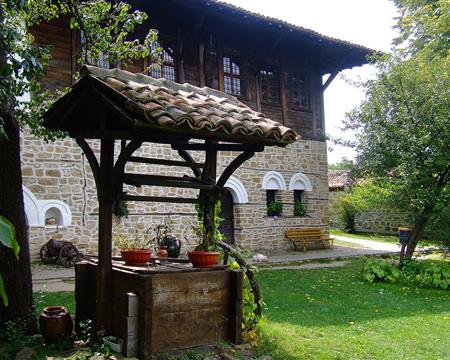
.jpg)
.jpg)